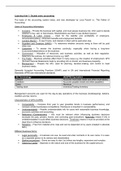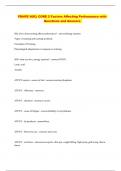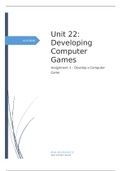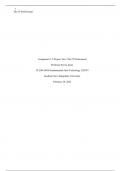The basis of the accounting system today, and was developed by Luca Pacioli i.e. ‘The Father of
Accounting’.
Users of Accounting Information:
Investors – Provide the business with capital, and must assess business risk. Infor used to decide
whether to buy, sell, or hold shares. Shareholders use them to see dividend payout.
Employees & Labor Unions – Used for the stability and profitability of employers,
remuneration(salary), retirement benefits and employment benefits.
Lenders (Banks) – to see if loans, and interest on them will be paid when due.
Suppliers and Creditors (SARS) – To determine whether amounts owing to them will be paid
when due.
Customers – To assess the business continuity, especially when having a long-term
involvement/dependence on the business.
Government – Allocation of resources, and business activities, as well as their regulation.
Determine tax policies, for national income e.g. GDP.
The Public – Business activities affect them in many ways e.g. the creation of employment. AFS
(Annual Financial Statements) help by providing info on trends, and business prosperity.
Management – Prepare the AFs, used for planning, decision-making, and control to meet
business needs.
Generally Accepted Accounting Practices (GAAP) used in SA and International Financial Reporting
Standards (IFRS) are international standards.
SA Terminology IAS/IFRS Equivalent
Debtors Accounts receivable (trade and other receivables)
Creditors Accounts payable (trade and other payables)
Sales Revenue
Trading stock Inventory/Trading Inventory
Management accounts are used for the day-to-day operations of the business (bookkeeping), debtors,
creditors and tax returns.
Characteristics of AFS (CURR):
Comparability – Compare from year to year (possible trends in business performance), and
compare similar businesses (competitors). Disclosure is important in comparability.
Understandability – Readily understandable info for users with reasonable business knowledge,
economic activities and accounting.
Relevance (Contemporary) – Info must be relevant when influencing business decisions
(evaluate the past, present, future), and correcting past evaluations. Materiality means if info is
omitted/misstated it could affect business decisions. Timeliness means it must be provided at the
ideal time to influence decisions.
Reliability – Free from material error, bias and can be depended on by users (created in absolute
faith).
Different business forms:
Legal personality – A business can sue, be sued and enter contracts in its own name. It is seen
as a separate person to its owners and shareholders.
Starting procedures – Some are easy to start, but others are lengthy, expensive and complex.
Obtaining Capital – Depends on the nature and size of the business for the capital amount.
, Ownership and Management – Choice of Form of Ownership (FOO) linked to owners’ desired
control and management of the business. Examples of FOO: Sole Trader, Closed Corporation,
Partnership, Company.
Profit distribution – Varied from different FOO’s e.g. in a Sole Trader the owner takes all profit,
while others use a ratio for profit distribution.
Income Tax – The calculation differs from each FOO. When a business is a separate legal
personality, it is responsible for its own tax (this happens in a Closed Corporation and a
Company). In a Sole Trader and Partnership, taxation is on the owner (Owner = Business). The
Sole Trader is the oldest FOO.
Financial vs Management Accounting:
Financial – Provides a scorecard by which past business performance is judged by AFS which
are used by stakeholders (people affected by business activities).
Management – Reports prepared for managers and others inside the organization. Called
Managerial Accounting.
Financial Accounting Management Accounting
Reports to external stakeholders e.g. SARS, Reports to internal stakeholders e.g. employees.
Banks
Focus on summaries on past financial events. Focus on decisions affecting the business future.
Objective, and verifiable information. Data = relevant and flexible, Timeliness of info is
needed.
Data = summarized for whole business. Detailed reports on departments, products,
customers, employees are made.
Must follow GAAP, IFRS, and/or IAS Need not to follow accounting framework.
Must produce AFS AFS/Reporting is voluntary.
Management Functions (POLC):
Planning – ID ways of attaining goals, and required resources needed in the process to reach
goals.
Organizing – Developing an organogram, putting measure in place to ensure resources (people
and material) are in place to reach goals.
Leading – Directing Human Resources (HR) of business, and motivating employees, so they are
in line with goals and plans.
Controlling – Check that performance and actions conform to plans to reach goals. Makes it
possible for management to ID deviations from goals, rectify deviations, and revise goals if
needed.
Internal environment – Economic factors within the organization over which management has
some control.
External environment – Economic factors outside the organization over which management has
no control.
The Accounting Cycle:
1. Transactions
2. Journals
3. General Ledger
4. Trial Balance
5. Income Statement
6. Balance Sheet
Year-end procedures.












